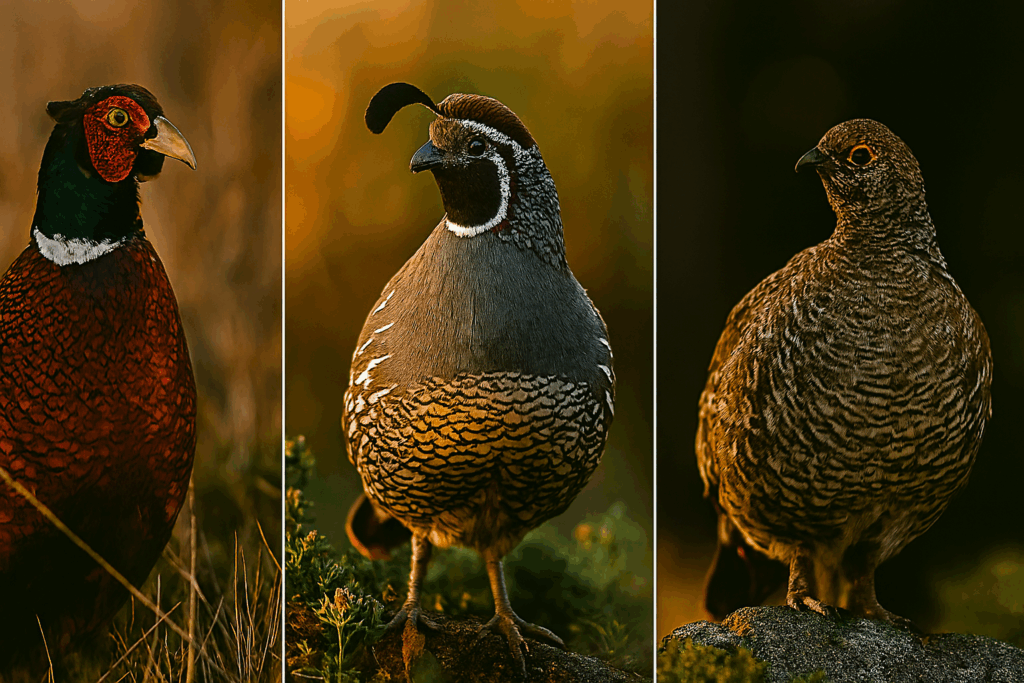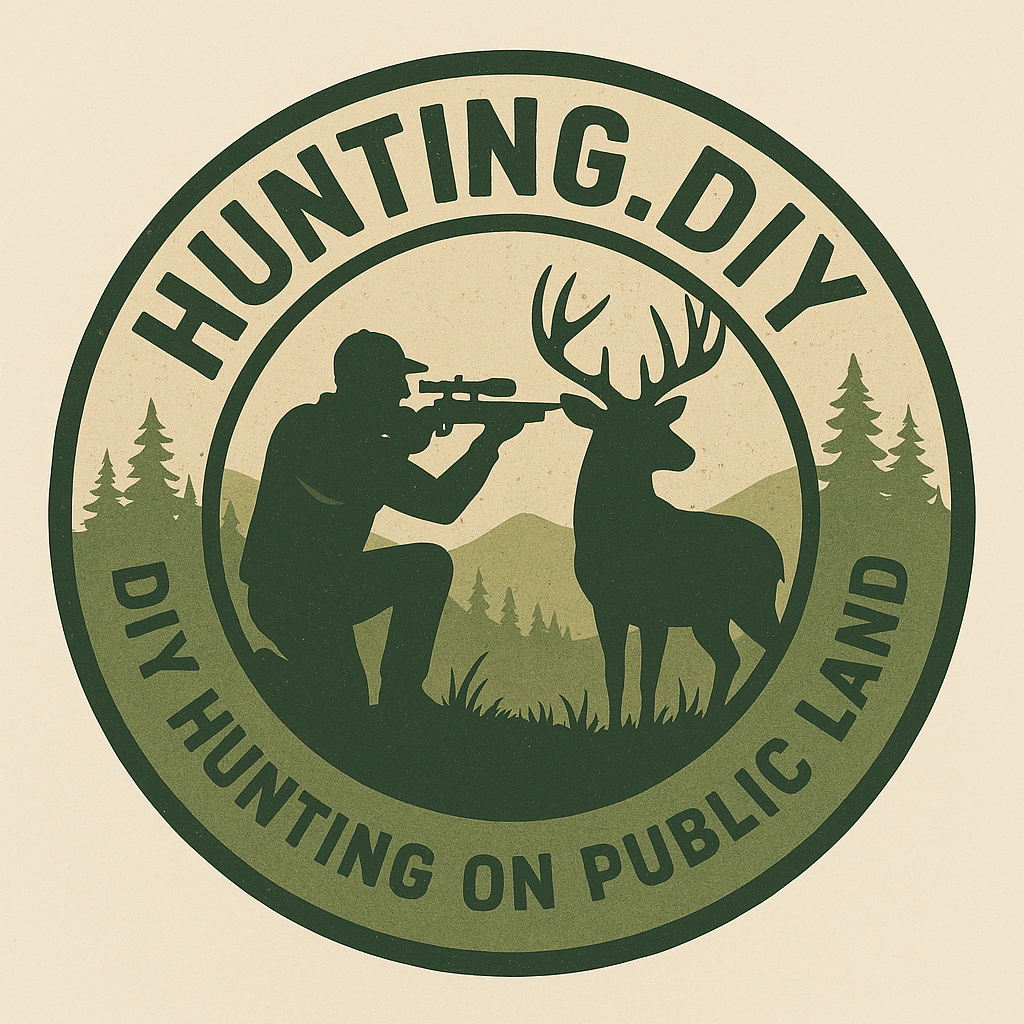Upland Game Birds DIY Hunting Guide & Tips
Upland game birds hunting guide: Discover everything you need to start your DIY upland bird hunting adventure, from understanding key species like pheasant, quail, and grouse to choosing the right gear, scouting public land, and mastering essential techniques for a successful hunt in 2025.

Species Classification
Upland game birds hunting guide falls into three main camps: pheasants, quail, and grouse. These terrestrial fowl thrive in field edges, brushy margins, and timber breaks where they feed, roost, and nest. Ring-necked pheasants (Phasianus colchicus) are exotic imports that dominate Midwestern and Western ag-lands. North American quail include the bobwhite (Colinus virginianus) in the East and scaled quail (Callipepla squamata) in the Southwest. Grouse encompass ruffed (Bonasa umbellus) in northern hardwoods, spruce-ruffed (Dendragapus canadensis) in subalpine zones, and dusky (Dendragapus obscurus) in western forests. Each species shares a love for cover that balances open feeding zones with thick brush for escape and nesting.
Upland Game Birds: Pheasant, Quail, and Grouse
Pheasant
Ring-necked pheasants swagger across fields like royalty on spindly legs. These big, colorful birds flourish in open farmland edged by brushy hedgerows and fence rows. When you spot one, expect a frantic, low-to-the-ground flush that rockets into a swirl of copper and green feathers. Public land CRP fields and waste grain patches are prime staging areas—learn where farmers rotate cover crops, and hit those edges at first light. A reliable 12-gauge load of #4 shot paired with a synthetic-stocked shotgun will carry the punch you need without beating yourself up on recoil. Work the fence lines and ditch banks in tight grid patterns, staying low and moving slow; pheasants spook easily, so keep your head on a swivel. By mid-morning, they’ll tuck into thicker cover for midday, so plan for shorter, sharper pushes in the cool hours. Field-dressed pheasant is gamey, firm, and perfect for warming rice pilaf or pot pies—just remember to bleed and chill quickly to keep the meat tender.
Quail
Quail are the pocket rockets of the uplands—small, chatty, and fond of tight coves of brush, tall grasses, and weedy fence rows. Bobwhite quail and scaled quail are the usual suspects, and they hunker down hard when spooked, waiting for you to stumble within shotgun range. Zero in on knee-high sorghum patches or sun-baked creek bottoms lined with prickly pear; these microhabitats hold coveys year-round. A light 20-gauge with #6 shot lets you swing fast and keeps loads feather-light for double and triple shots when a covey busts. Your hunt is a silent dance—move quietly uphill into cover, pause at every scrape of dry grass, and listen for their whistled “bob-white” calls. Fresh quail breast makes exquisite sliders or bacon-wrapped appetizers; skin on and pan-seared with butter, you’ll taste why quail are the rock stars of small-game dining.
Grouse
Grouse stand their ground in tangled understories of aspens, oaks, and conifers. Ruffed grouse are the classic choice in northern hardwood country, while spruce-ruffed and dusky grouse reign in mountainous West ridges. These chunky birds favor thick brush, berry-laden thickets, and riparian edges—think wind-tossed aspens and willow draws along creek beds. Boots with solid ankle support will save your shins and knees as you plunge through blowdown and tangle with deadfall. A 20-gauge or 28-gauge with #5 shot is ideal; grouse tolerate a close shot so you can rip through cover with fast swings. Work a zig-zag pattern through brush zones, letting each gust of wings guide your path. The scent of spruce needles and pine resin will hang in the air as you push them out. Grouse breast is lean and mild—perfect for quick sautés or creamy stews—just brine lightly to prevent dryness and unlock that delicate, woodsy flavor.
Physical Description
Ring-necked pheasants are the heavyweight champs of the uplands, tipping the scales at 2–3 pounds with coppery bodies, iridescent green heads, and stark white collars. Quail bring you down to size—bobwhites run under a pound, sporting mottled brown backs, buffy breasts, and the trademark “forward-facing comma” crest on males; scaled quail swap that crest for a bluish cast and fish-scale pattern on the belly. Grouse are stocky woodland warriors at 1–2 pounds, drab gray to brown plumage mottled with black barring, short tails, and feathered legs in colder climes. Their chunky build helps them hold firm in dense cover until you flush them with a thunderous beat of wings.
Distribution and Habitat
Pheasants rule open farmland from the Dakotas to Washington, favoring CRP strips, ditch banks, and spilled grain fields. Quail quilt across the map—bobwhites pepper southern and eastern grasslands, weedy fence lines, and old fields; scalies cling to arid rangelands, cactus flats, and mesquite breaks from Texas to Arizona. Grouse carve out niches in cooler, forested country—ruffeds stake claims in aspens, oaks, and alder along creeks; spruce-ruffeds and duskies patrol montane ridges, conifer draws, and berry-strewn clearcuts. Public lands, wildlife management areas, and state trust parcels often mark the best backcountry real estate for these birds.
Season Dates and Regulations
Pheasant seasons usually open in October and run through January, varying by state. Quail seasons kick off in September or October, with bag limits around 8–12 birds per day. Grouse seasons tend to mirror autumn salmon runs, opening September–October and closing by December, with daily limits of 2–3 birds. Always double-check the local wildlife agency’s regulations for specific dates, permit requirements, and migratory bird treaty compliance. Hunting over bait, spotlighting at night, and unplugged shotguns are typically prohibited.
Best Hunting States/Regions
- Pheasant: South Dakota (Pheasant Capital of the World), Kansas, Nebraska, Washington, Wisconsin
- Quail: Texas Hill Country, Oklahoma’s Cross Timbers, Georgia’s Piedmont, New Mexico’s desert edges
- Grouse: Minnesota’s North Woods, Colorado’s Front Range foothills, Idaho’s Bitterroot Mountains, Pennsylvania’s Alleghenies
Hunting Equipment: Gun and Ammo
A 12-gauge Remington 870 or Mossberg 500 loaded with #4–#5 shot is the go-to for pheasants—pack enough punch to break through wind-battered feathers at 30–40 yards. Quail calls for a lighter touch: a 20-gauge or even a 28-gauge with #6–#7 shot lets you swing fast through thick grass without arm-burn. Grouse demand stealth and fast handling—20- or 28-gauge with #5 shot lets you negotiate timber without trading off pattern density. Synthetic stocks and recoil pads keep you shooting longer without bruises. Don’t skimp on a stout vest or pack with dedicated shells pockets, game pouch, and a solid canvas strap for carrying dogs.
Hunting Methods and Techniques
Upland hunting is sweaty grid work. Walk tight covers in 20-yard swaths, letting a well-trained pointing dog quarter ahead. Pheasants spook at the slightest silhouette, so work fence lines, feed rows, and shelter belts in slow, deliberate flanks. Quail coveys cluster in knee-high grasses—sweep fields in sinewy arcs, pause at every rustle, and be ready for multiple flushes in a single covey bust. Grouse hang tight in subcanopy tangles—zigzag creek draws and aspen groves, push deadfall and berry thickets, and follow the sound of wings ripping through brush. Silence your steps, keep wind in your face, and trust your dog’s nose.
Licenses and Tags
Upland bird hunting requires a state small-game license, often bundled into an all-game or annual license. Pheasant may need an upland game stamp or habitat surcharge; quail and grouse typically fall under general upland tags. Nonresident fees can double or triple resident costs, so plan accordingly. Resident youth and veteran discounts apply in many states—check your agency’s website for voucher programs or leftover over-the-counter tags near opening day.
Diet and Feeding
Pheasants are opportunistic grain fiends—corn, wheat, milo, and seeds. They roost in tall cover but descend to stubble fields at dawn. Quail scratch for seeds, insects, and green grass shoots—look for their midday dance through weed flats and sorghum draws. Grouse feast on buds, berries, and insects—spring comes alive with new leaf buds; autumn berries and seeds fatten them for winter. Water is scarce where quail live, so riparian strips and livestock troughs can concentrate birds in dry country.
Reproduction and Life Cycle
Pheasants start pair bonds in spring; hens lay a clutch of 10–12 camouflaged eggs in grassy nests. Chicks are precocial—on the run within hours. Quail hens lay 12–16 eggs in shallow scrapes; broods break apart and regroup through the summer as chicks scatter under cover. Grouse hens hide nests under logs or brush roots, laying 8–10 eggs; chicks follow their mothers into dense cover, learning insect and berry foraging. Peak nesting success hinges on weather—wet springs drown nests; drought dries up brood ponds.
Population Status
Pheasant numbers soar on intensive habitat programs but crash when CRP rolls back or severe winters hit. Quail populations ebb and flow with brush clearing, drought, and predator pressure. Grouse numbers climb in freshly logged forests and decline when timber is too mature or too fragmented. State wildlife agencies monitor trends via call-count surveys and harvest data; adaptive habitat management keeps populations in check.
Meat Quality and Processing
Pheasant meat is lean, firm, and richly gamey—ideal for stews, pot pies, and rice dishes. Quail breasts are tender and mild; cook ‘em fast, skin-on, in butter or bacon wraps to preserve juiciness. Grouse is wet-season tender and mild; brine before cooking to prevent dryness, then sauté, bake, or slow-cook with root vegetables. Field-dress birds immediately, chill rapidly, and skin within 24 hours for best flavor. Always cool meat thoroughly to halt bacterial growth.
Safety Considerations
Upland hunting means traversing rough, uneven terrain. Wear blaze orange on jacket, cap, and vest to stay visible in tangled cover. Carry a whistle, first-aid kit, and water; flash-bright rescue panels or GPS beacons can be lifesavers in remote blocks. Practice muzzle awareness on every swing—your dog, partner, and hillside rattlesnakes can lurk just off your shoulder.
Tracks and Sign
Pheasant tracks are three-toed prints with slight webbing, often surrounded by scattered grain shells and droppings near roost sites. Quail tracks look like tiny chicken prints in soft mud; covey scrapes appear as small depressions with busted seed hulls. Grouse leave stouter, rounded three-toed tracks and may scratch through leaf litter, leaving U-shaped scrapes when feeding on buds.
Similar Species
Never mistake a young turkey for a pheasant—turkey poults have longer necks and slimmer bodies. Scaled quail can be confused with Gambel’s quail; look for the scaly stomach pattern and a plain gray breast. Ruffed and sharp-tailed grouse overlap in parts of the boreal; note tail banding—ruffeds show a broad black tail band, sharp-tails a narrow white one. Misidentification can cost you a season’s tag and draw fines, so learn each bird’s stance, plumage pattern, and call.
